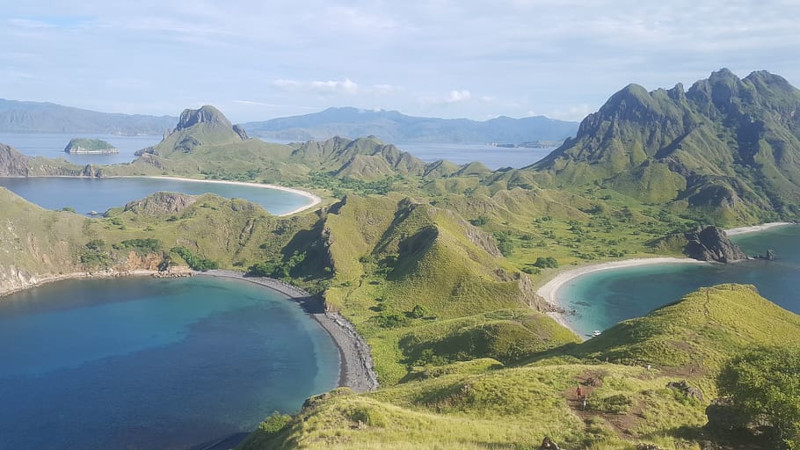
Komodo Island Facts
- This creation of time and geological forces remains best known by the english language term of Komodo Island. It’s known by a different title in Polynesian, however. That’s the surprisingly similar name of Pulau Komodo. By either, it’s remarkable.
- The location truly stands out within the region in which it lies. That’s saying something, since it represents only one of 17,508 islands comprising the Republic of Indonesia! Despite these incredible numbers, the site manages to distinguish itself quite well.
- It’s still unknown how long the local Indigenous Peoples of the amazing region knew of this true geological marvel. The first known visit to the beautiful island by a westerner, however, only occurred in 1912. Dutch sailors first visited the site at that time.
- Its chief claim to fame stems from its fauna. That’s because it’s the primary home of the aptly-named Komodo Dragon. This marvel of the natural world appears on this island and a few smaller, neighboring one’s. It also holds one of only seven pink beaches!
- Thankfully, the value of the Komodo Island hasn’t been lost on some people. Due to both its own extensive natural beauty, and its unique wildlife, it now holds a certain measure of protection. That’s because it forms part of the Komodo National Park.
Related Articles
Komodo Island Physical Description
Magnificent Komodo Island quickly captivates those few fortunate enough to visit the site. It does so, however, due to far more than just the presence of the namesake reptiles. That’s because the site possesses a full array of its own natural beauty to amaze.
The visually impressive natural feature possesses a highly irregular shape. Overall, however, it’s perhaps best described as an elongated rectangle. This gorgeous marvel of geology measures approximately 6.03 mi (9.7 km) in width, and roughly 18.64 mi (30 km) in length.
These dimensions provide it with a total area of roughly 112.4 sq mi (291 sq km). But Nature packed a lot of natural features into this relatively small area. For one, much of the area of the island consists of hills and mountains. The highest of these measure 2,700 ft (825 m).
The outline of the stunning Komodo Island itself creates amazing natural features, too. Due to that nature, several lagoon-like formations appear. Some of these extend all the way to the water’s edge. Many reach upward in a sharply vertical angle that impresses the viewer.
Meanwhile, other hills and mountains leave room for beaches of incredible beauty. Most of these features are renowned for their brilliant white hue. Just offshore in many regions also lie some of the most beautiful areas of coral reefs found anywhere in the world.
Komodo Island Location, Formation, and Ecology
The extraordinary Komodo Island formed in a very unique part of the world. That’s also a region of the globe already renowned for the presence of an abundance of natural wonders of all kinds. It lies in an area roughly bordered by both the Indian and Pacific Oceans.
As part of Indonesia, its formation further placed the island roughly between Australia to the southeast and Asia to the northwest. More locally, it sits approximately in the center of the island nation. Its location puts it between the larger islands of Flores and Sumbawa.
The origins of this fabulous setting likely won’t surprise many people. That’s due to the fact that, like a large majority of the surrounding islands, its volcanic in origin. The best estimates of scientists places the formation of this specific island at around 1 million years ago.
It, along with the other members of the extensive archipelago, sits on the juncture of two continental plates. Named Sunda and Sahul, it’s their collision that generates the energy for the creation of this island. The entire region remains quite active even today.
Despite the seeming harshness of its conditions, Komodo Island hosts a surprisingly rich ecosystem. In fact, it serves as the central part of the Komodo National Park, a UNESCO World Heritage Site. That well-deserved designation occurred in the year 1977.
Its area contains a variety of grassy regions and dry savannahs. Yet it also boasts moderately extensive forests. These serve as home to a range of animals, including wild pigs and water buffalo, and numerous birds. Its most famous resident, though, is the namesake reptile.
Features Sharing Its Region
Check out our other articles on 3 Tantalizing Wonders of Tanzania, Eastern Gray Squirrel, Cheddar Gorge, Blue Orchard Bee, Wilson’s Bird-of-paradise, Appalachian Avens, American Alligator
